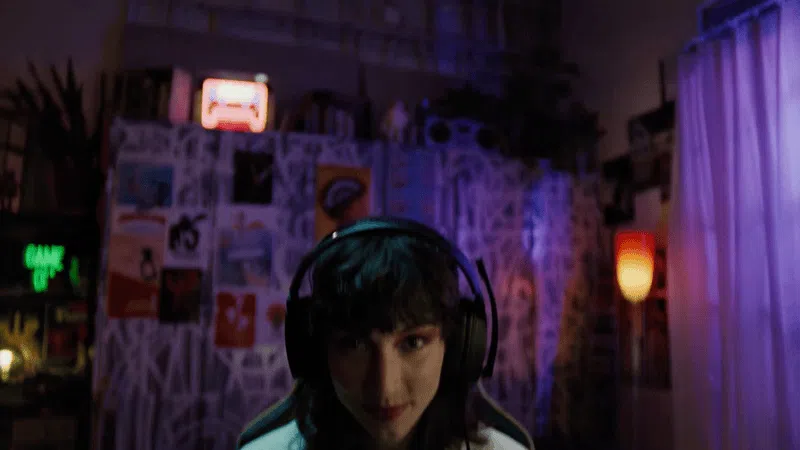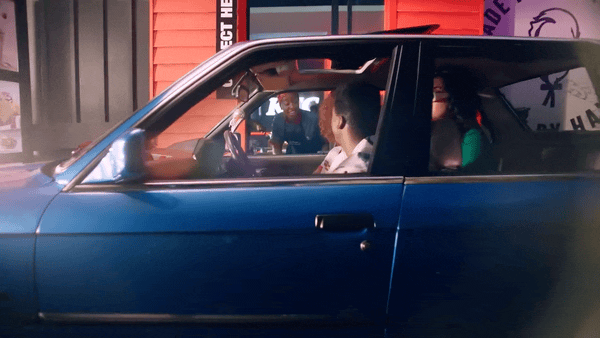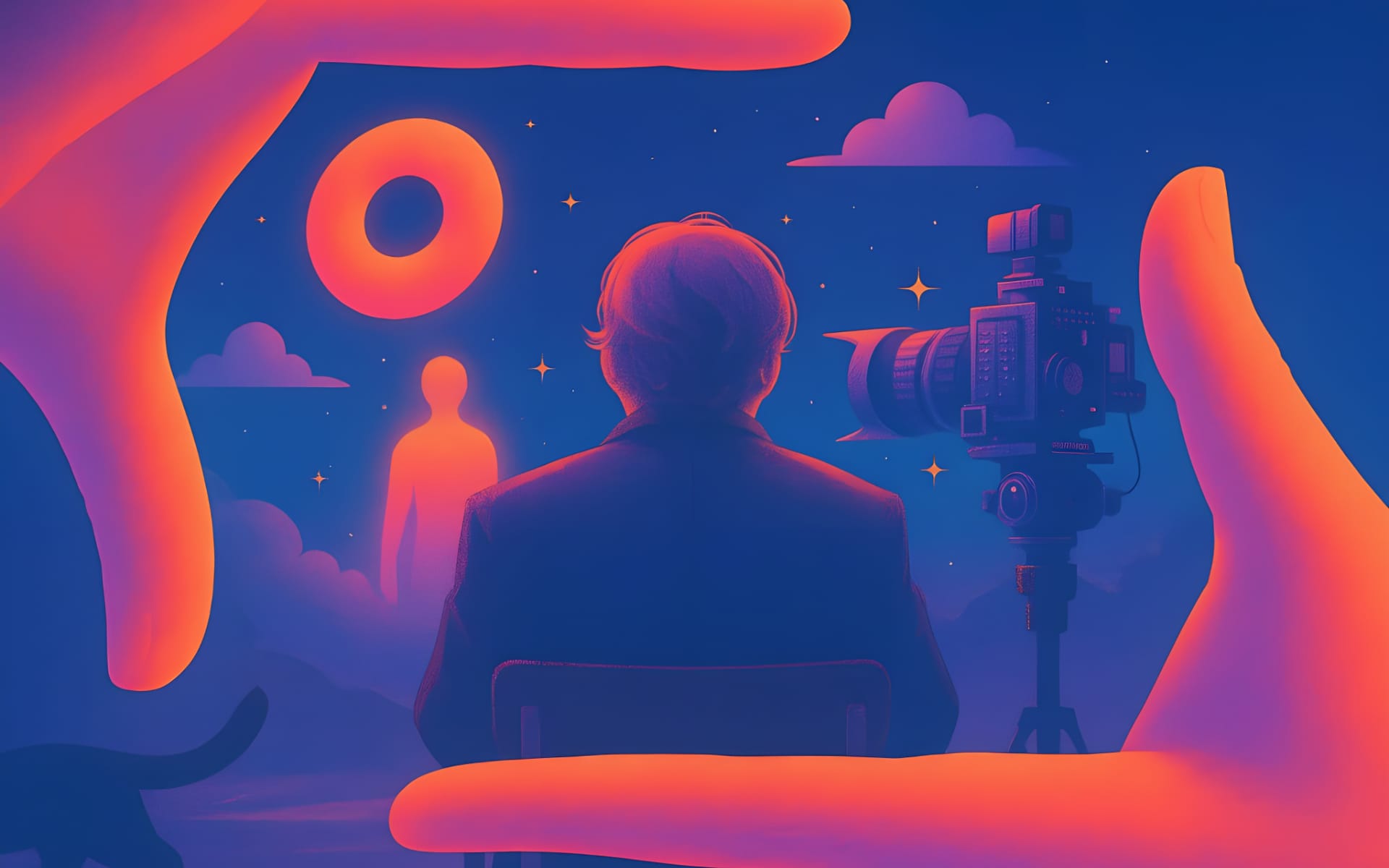The design world is experiencing a quiet revolution. While we’ve spent decades perfecting the art of visual composition, color theory, and aesthetic hierarchy, today’s most successful designers are thinking less like traditional graphic designers and more like film directors. This shift represents a fundamental evolution in how we approach creative problem-solving in an increasingly dynamic, interconnected world.
The Director’s Lens
Film directors don’t just create beautiful images—they orchestrate experiences that unfold over time. Every frame serves a larger narrative purpose, every scene builds emotional momentum, and every creative decision considers the audience’s journey from beginning to end. Directors understand that their job isn’t to create a single perfect moment, but to guide viewers through a transformative experience.

This temporal thinking is what separates directorial design from traditional graphic design. Where graphic designers have historically focused on optimizing individual touchpoints—the perfect poster, the compelling advertisement, the balanced layout—directors think in sequences, arcs, and journeys.
Beyond the Single Frame
Traditional graphic design emerged from print media, where the immediate impact of a static composition measured success. Can you communicate the message clearly? Does the hierarchy guide the eye effectively? Is the aesthetic appropriate for the brand? These remain important questions, but they’re no longer sufficient.
In today’s multi-touchpoint world, users don’t encounter brands through single interactions. They discover a company through social media, research on the website, try the product, engage with customer service, and potentially become advocates who share their experience with others. Each of these moments is a scene in a larger story, and the quality of that story determines the success of the entire experience.

Consider how Netflix approaches design. Their interface isn’t just visually appealing—it’s choreographed to create a viewing journey. The autoplay previews, the algorithmic recommendations, the way content is categorized and presented—every element serves the larger narrative of helping users discover and enjoy content. This is directorial thinking applied to digital design.
The Art of Pacing and Rhythm
Directors understand that timing is everything. They know when to build tension, when to provide relief, when to reveal information, and when to let moments breathe. This sensitivity to pacing translates directly to modern design challenges.
A well-designed onboarding experience, for instance, mirrors the pacing of a good film. It doesn’t overwhelm users with every feature at once (that would be like cramming all the plot points into the first scene). Instead, it reveals functionality progressively, building confidence and understanding at each step. The best onboarding experiences feel effortless because they respect the user’s emotional and cognitive journey.
Apple’s product launches demonstrate this principle beautifully. Each presentation is structured like a film, with careful pacing that builds anticipation, reveals features at precisely the right moments, and creates emotional peaks that audiences remember. The design of the presentation itself—from the staging to the slides to the product demos—serves the larger narrative of desire and aspiration.
Constraints as Creative Catalysts
Film directors are intimately familiar with constraints. They work within budgets, shooting schedules, location limitations, and technical restrictions. Rather than seeing these as obstacles, experienced directors use constraints as creative catalysts that force innovative solutions and focused storytelling.
This constraint-based thinking is invaluable for modern designers. Whether it’s technical limitations, budget restrictions, or regulatory requirements, constraints force designers to prioritize what truly matters. A director’s mindset helps you ask: “Given these limitations, what’s the most important story we need to tell, and how can we tell it most effectively?”
The most successful startups often demonstrate this principle. With limited resources, they can’t create perfect experiences across every touchpoint. Instead, they identify the most critical moments in their user journey and design those exceptionally well, creating a compelling narrative even within significant constraints.
Emotional Architecture
Directors are architects of emotion. They understand that audiences don’t just process information—they feel their way through experiences. Every scene is designed to evoke specific emotional responses that serve the larger story being told.

Modern designers must think similarly about emotional architecture. A checkout process isn’t just a series of forms—it’s a moment of vulnerability where users must trust your brand with their personal and financial information. The design should acknowledge this emotional reality and create appropriate feelings of security and confidence.
Airbnb exemplifies this approach. Their entire platform is designed around the emotional journey of travel—from the excitement of discovery to the anxiety of booking with strangers to the joy of unique experiences. Every design decision, from photography standards to messaging tone, serves this emotional narrative.
Collaboration and Vision
Film directors don’t work alone. They collaborate with cinematographers, editors, sound designers, actors, and countless other specialists. Yet they maintain a unified vision that guides all creative decisions. This balance between collaboration and creative leadership is essential for modern design challenges.
Today’s design problems are too complex for any individual to solve alone. They require input from user researchers, engineers, product managers, marketers, and business stakeholders. Like directors, designers must learn to synthesize diverse perspectives while maintaining a coherent vision for the user experience.
The most successful design teams operate like film crews—each specialist contributes their expertise while serving a shared creative vision. The designer’s role becomes less about executing every detail and more about orchestrating a team toward a common goal.
The Systems Perspective
Directors think in systems. They understand how individual scenes connect to create acts, how acts build toward climaxes, and how everything serves the overall narrative structure. This systems thinking is crucial for modern design challenges that span multiple products, platforms, and touchpoints.
Brand design today requires this systematic approach. A company’s identity isn’t just a logo and color palette—it’s a coherent system that expresses itself differently across various contexts while maintaining core consistency. Like a film franchise, successful brands create design systems that can adapt to new situations while preserving their essential character.
Google’s Material Design system demonstrates this principle. Rather than dictating specific solutions, it provides a design language that can be applied across countless applications while maintaining visual and experiential consistency. This is directorial thinking scaled to organizational level.
Embracing the Temporal Nature of Experience
Perhaps the most fundamental shift in adopting a director’s mindset is embracing the temporal nature of modern design challenges. Static solutions are increasingly inadequate for dynamic problems. Users don’t just see designs—they move through them, interact with them, and form relationships with them over time.

This temporal thinking changes how we approach everything from website design to service experiences. Instead of optimizing individual pages or touchpoints, we design journeys. Instead of creating perfect static compositions, we choreograph sequences of interactions that build toward meaningful outcomes.
The future belongs to designers who can think like directors—who understand that their job isn’t just to make things look good, but to guide audiences through transformative experiences. This doesn’t mean abandoning the principles of good visual design, but expanding beyond them to embrace the full complexity of human experience.
In a world where every interaction is part of a larger story, the designers who succeed will be those who can direct that story with intention, empathy, and skill. The screen is no longer a canvas—it’s a stage. And every designer is now, in some sense, a director.


